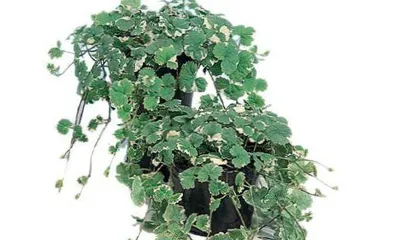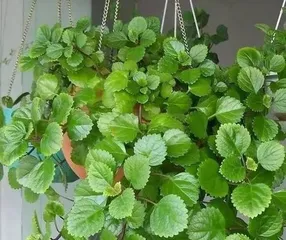Ivy Toxicity and Its Suitable Care Environment

Ivy is one of the most popular indoor green plants among many enthusiasts. However, for a long time, some people have questioned whether it is toxic, which has also caused many misunderstandings about it. To this end, this article will introduce the toxicity of ivy, care techniques, and other aspects one by one.
I: A Brief Introduction to Ivy Toxicity
Ivy is a common ornamental plant and also a poisonous plant. It contains a toxic compound that, after human contact, can cause adverse reactions such as itching and skin allergies, and may even cause serious damage to the body.

II: Causes of Ivy Toxicity
The cause of ivy's toxicity is due to this toxic compound, which is mainly concentrated in the roots, stems, and leaves of the plant. When humans come into contact with these parts, an allergic reaction will occur, causing discomfort or even danger.
III: Preventive Measures for Ivy Toxicity
Before coming into contact with ivy, it is best to wear gloves or take other measures to avoid direct contact with the plant. If you accidentally come into contact with ivy, you should rinse your skin promptly. At the same time, for safety reasons, you should also stay away from the vines and stems of ivy to avoid accidental ingestion or contact.
IV: Morphological Characteristics of Ivy
Ivy is a climbing plant with slender stems and dark green, pentagonal-shaped leaves. The leaf surface is smooth and has a strong luster, making it very beautiful. In an environment with sufficient light and humid air, ivy grows particularly lush.

V: Suitable Environment for Ivy
Ivy prefers a warm, humid, and well-ventilated environment. The room temperature should generally be maintained between 18-23°C, with sufficient sunlight but not direct exposure. To keep the air humid, ivy can also be placed in humid environments such as bathrooms.
VI: Seedling Rearing Method for Ivy
To cultivate ivy at home, you first need to prepare seedling soil and seeds. The seedling soil should be well-aerated and well-drained. Then, soak the seeds in warm water for about 10 minutes, sprinkle them on the seedling soil, and gently pat them flat.
VII: Growth Habits of Ivy
Ivy is a climbing plant that can climb onto walls, fences, and other places, or it can climb with the help of supports such as shelves and wire mesh. During its growth period, ivy needs constant pruning and tidying of its stems and leaves to maintain a neat and beautiful appearance.
VIII: Care Tips for Ivy
Indoor ivy needs regular watering, but do not overwater to avoid diseases caused by excess moisture. It also needs regular fertilization, once a month is sufficient. Overly long stems and leaves need to be pruned in a timely manner to maintain a tidy appearance.
IX: Propagation Methods of Ivy
There are many ways to propagate ivy, including through cuttings, division, and layering. Among them, cuttings are the most commonly used method, which only requires selecting a stem segment of appropriate length for cutting.
X: Common Problems and Solutions for Ivy
During the care process, ivy may encounter many problems, such as wilting and yellowing leaves, which need to be solved in a timely manner. The solutions include regular watering, appropriate fertilization, and pruning and shaping.
XI: Precautions for Ivy Care
In the process of caring for ivy, you need to pay attention to the following points: regular watering, appropriate fertilization, regular pruning, maintaining ventilation, and preventing gray mold on leaves.
XII: The Aesthetic Role of Ivy
As a type of indoor green plant, ivy can not only beautify the environment and purify the air, but also regulate the atmosphere and create a comfortable living space.
XIII: Uses of Ivy
Ivy can be used not only for interior decoration but also as a plant for landscaping in gardens and parks. It holds an important place in European cultural traditions and is regarded as a symbol of lasting friendship and eternal love.
XIV: Varieties and Classifications of Ivy
There are many different varieties and classifications of ivy, such as English ivy, small-leaved ivy, and Persian ivy. Each variety has its unique characteristics and uses, and you can choose according to your own needs.
XV:
Overall, although ivy has a certain level of toxicity, as long as you pay attention to protective measures, you can safely care for and enjoy it. At the same time, during the care process, it is also necessary to pay attention to regular pruning and tidying of the stems and leaves to maintain beauty and hygiene. We hope this article is helpful to the majority of green plant enthusiasts.